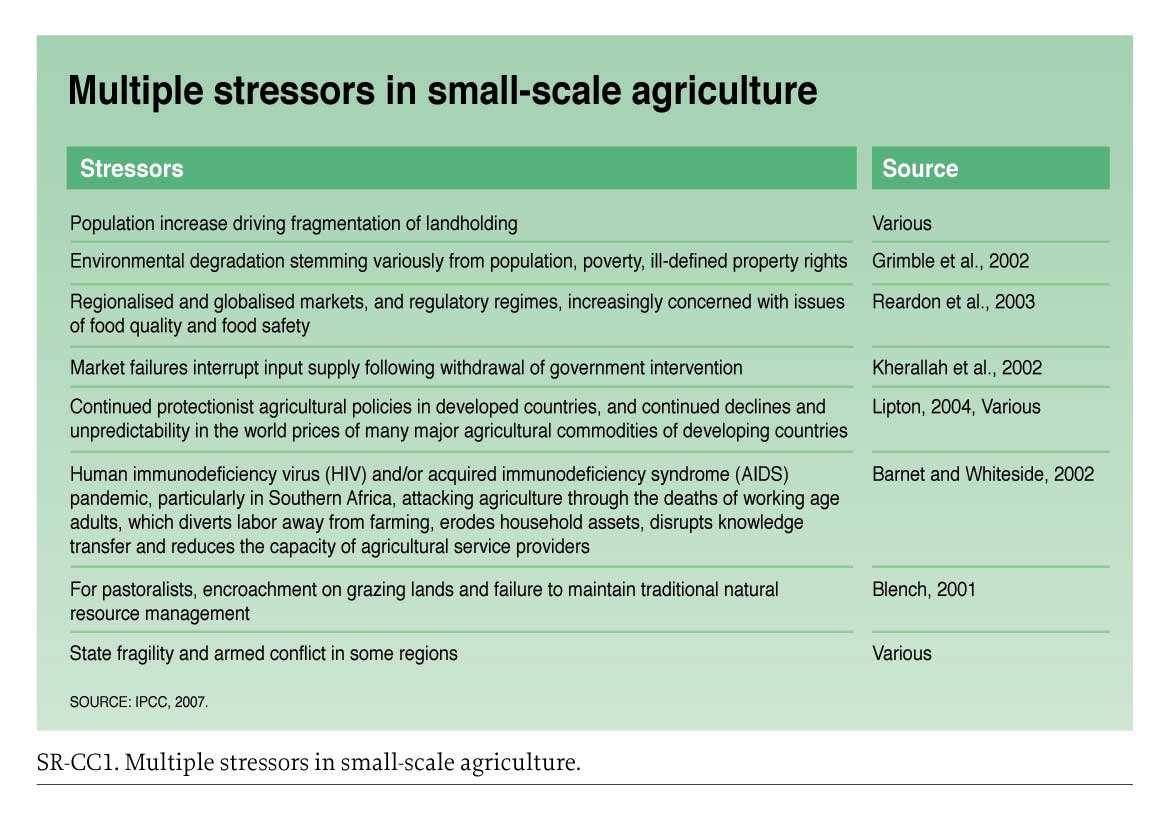tainable development share some important common goals and determinants such as, for example, equitable access to resources, appropriate technologies and decision-support mechanisms to cope with risks. Furthermore, decisions on climate change are usually made in the context of other environmental, social and economic stresses.
There is a need to develop agricultural policies that both reduce emissions and allow adaptation to climate change that are closer to carbon-neutral, minimize trace gas emissions and reduce natural capital degradation [Global Chapter 4]. Important questions include how emissions from agriculture and forestry can be effectively reduced, how to produce food with greater input efficiency and less GHG emissions, how agriculture, agroforestry and forestry can best adapt under given local conditions, and what role bio-fuels can play—and, finally, what are the implications of these challenges on requirements for AKST [NAE Chapter 3]. More efforts will be required to develop new knowledge and technologies, especially for energy-efficient farming systems, as well as more comprehensive cost-benefit analysis than these now available [Global Chapter 3]. Interconnected issues, such as the effects of land use changes on biodiversity and on land degradation, need to be addressed in order to exploit synergies between the goals of UN conventions on biodiversity and desertification and climate change.
Adaptation and mitigation are complementary strategies to reduce impacts. The effects of reduced emissions in avoiding impacts by slowing the rate of temperature increase will not emerge for several decades due to the inertia of the climate system. Adaptation, therefore, will be important in coping with early impacts. Specifically, adaptation will be necessary to meet the challenge of impacts on agriculture |
|
to which we are already committed in the near term as well as for the long term, where the risk of unmitigated climate change impacts could exceed the adaptive capacity of existing agricultural systems.
Some "win-win" mitigation opportunities have already been identified. These include land use approaches such as lower rates of agricultural expansion into natural habitats; afforestation, reforestation, agroforestry and restoration of underutilized or degraded land; land use options such as carbon sequestration in agricultural soils, appropriate application of nitrogenous inputs; and effective manure management and use of feed that increases livestock digestive efficiency.
Policy options covering regulations and investment opportunities include financial incentives to maintain and increase forest area through reduced deforestation and degradation and improved management. Those policy options that enhance the production of renewable energy sources could be particularly effective. Any post-2012 regime has to be more inclusive of all agricultural such as reduced emission from reforestation and degradation activities to take full advantage of the opportunities offered by agriculture and forestry sectors [Global Chapter 6].
Local, national and regional agricultural development regulatory frameworks will have to take into account tradeoffs between the need for promoting higher yields and the need for the maintenance and enhancement of environmental services that support agriculture [SSA Chapter 4].
Adaptation options. Two types of adaptation have been recognized: autonomous and planned adaptation. Autonomous adaptation does not constitute a conscious response to climatic stimuli but is triggered by ecological changes in |
